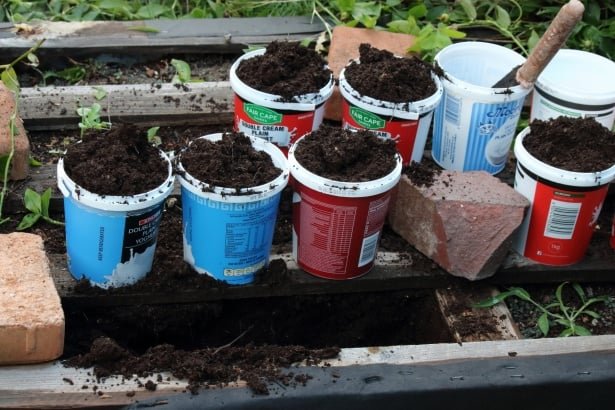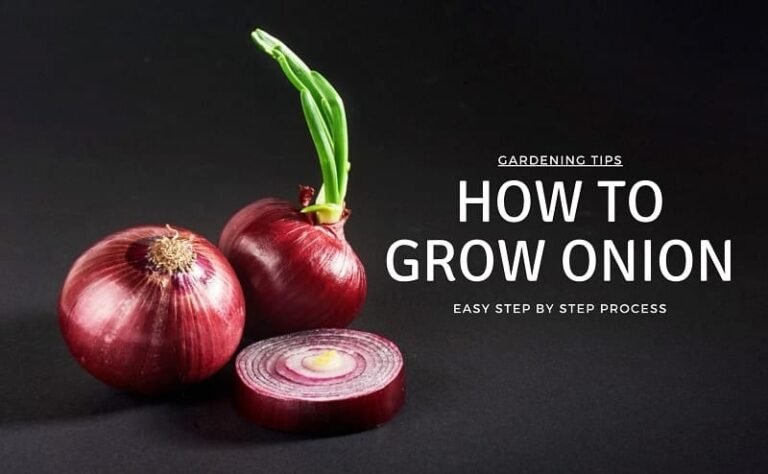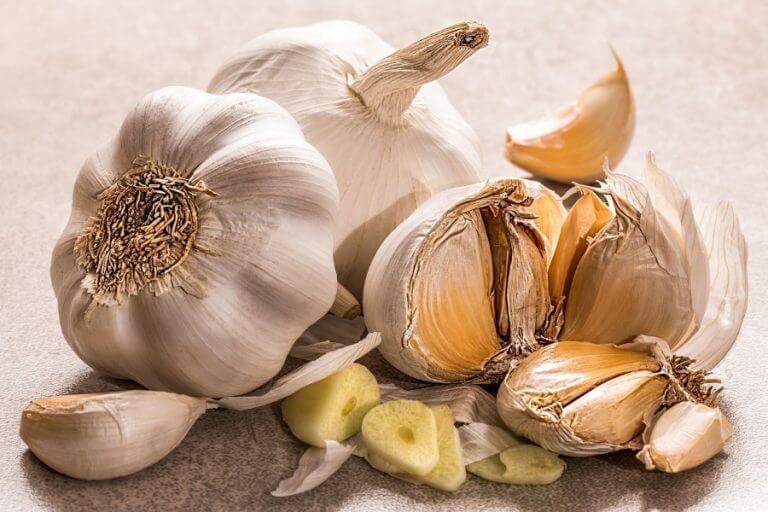How to Easily Prepare the Soil for Planting Vegetables (3 Stages)

Are you a gardener seeking information on how to prepare the soil for planting vegetables?
Do you want to know what it will take to have your soil set for gardening vegetables?
How long does it take to fix your soil for vegetable planting?
Are all soil types best for planting vegetables?
When should I plant veggies and how do I do that?
One good news about gardening is that you can learn How To Start A Garden From Scratch even as a novice.
And you can get your garden set up by taking advantage of the Gardening Tips And Tricks For Beginners.
However, all these attempts to have a healthy luscious garden will be fruitless if there is no good soil to start with.
In this article, we have given you a step-by-step guide on how to test, improve and set up your soil for planting vegetables.
Also, we have added all the needful information that you will find handy along this process.
Let’s help the farmer in you find expression by guiding you on the process to prepare your soil for planting vegetables in a few minutes.

How Do I Prepare The Soil For Planting Vegetables?
Preparing the soil for planting vegetables can seem to be quite a task or as simple as the following steps;
- Test the Soil.
- Add Compost.
- Amend Problem Soils.
- Adjust pH.
- Adjust Soil Nutrients.
- Till the Soil.
- Add Mulch.
Although simple, we have demystified this process into three stages that encompass other miniature stages for effective understanding.
If you want to set up a vegetable garden and need help preparing your soil, here’s what to do;
STAGE ONE: TEST THE SOIL
#1. Choose the Vegetable Garden Site.
If you’re ready to set up your own vegetable garden, you have to decide what kind of vegetable garden you want to keep.
A Raised Bed Vegetable Garden or an Indoor Vegetable Garden.
Once you have figured that out, ensure that the part you choose receives 6-8 hours of sunlight daily.
Also, ensure it has enough space for the number of vegetables you want to grow.
At least the space should be 40–50 square feet (3.7–4.6 m2).
That should give you room to plant multiple vegetables.
#2. Prepare the Soil.
Now you have your land ready for planting vegetables, next is to prepare the soil.
How do you do that?
- Remove grasses or sods if there are any over the plot.
- Loosen the soil to a depth of 8–10 in (20–25 cm) by turning the soil over the topsoil using a straight spade or your shovel. Or you can use a motorized tiller or cultivator if you want to loosen the soil quickly.
- Ensure you break the clods of dirt until all of the soil has a similar size and consistency.
Your soil at this point is almost ready to receive seedlings and vegetable transplants.
#3. Identify What Kind of Soil You Have.
The kind of soil for gardening vegetables determines how well the vegetables grow.
So, before planting the vegetables and as one of the ways to prepare the soil for cultivation, you have to determine the kind of soil you are going to be planting on.
How do you do this?
- Wearing your gardening gloves, take some of the soil and squeeze it tightly in your hand to see if it crumbles easily.
- Good soil for vegetable planting should form a loose ball that crumbles when you squeeze it hard.
- However, if the soil forms a hard ball, it’s too thick for vegetable growth. And that means the soil you intend planting on is clay soil.
- On the other hand, if it doesn’t form a ball at all, then it is too sandy and not good for vegetable gardening.
#4. Using a Test Kit, Check the Soil Nutrients.
Preparing the soil for planting vegetables is a process of great care.
It’s at this stage you determine the nutrient level of the soil you want to plant on.
How do you do this?
- Get a soil test kit.
- Collect 5-10 scoops of soil samples from different locations in your intended garden plot.
- Using a trowel, mix them together until they’re thoroughly combined.
- Put the mixed soil into different containers provided in a soil test kit.
- Fill the containers with water and shake them vigorously until the water changes color.
- Next, you have to compare the colors of the water to the guide in the test kit to see the pH and nutrient level.
#5. Test the Drainage Of Your Soil.
Even as you prepare the soil for planting vegetables and have had the nutrient level checked, next is to determine the soil’s ability to drain water.
How do you do this?
- Dig a hole in your garden plot that’s 12 inches deep and in diameter.
- Fill the hole with water using your water hose.
- Allow the hole to drain overnight before filling again.
- Measure the water level after one hour to see how much has drained.
- An ideal vegetable gardening soil will drain 2 inches (5.1 cm) of water every hour.
- However, if the water drains off quickly, then that’s not the soil you need. Your vegetables won’t receive enough water.
- On the other hand, if the water drains slowly, then the vegetable roots will become waterlogged and could develop rot.
STAGE TWO: AMEND OR IMPROVE THE SOIL
This is the process you undergo when you are ready to plant the vegetables.
Once you’re set, here’s what you should do;
#1. Turn The Soil At Least 3 Weeks Before Planting.
Because it takes a while before the soil absorbs nutrients, it’s ideal you turn the soil again at least 3 weeks before you plant your vegetables.
#2. Clear the Soil Of All the Weeds, Sticks, and Rocks.
As part of the process to prepare the soil for planting vegetables, you have to remove any weeds, sticks, and rocks.
While removing the weed, uproot it from the roots.
Get rid of as much waste out of your soil as you can.
#3. Add Gypsum To Clay Soils.
If the soil you intend to plant on is clay soil (though not advisable) you have to add Gypsum to help break it apart.
Gypsum adds nutrients to clay soil and helps loosen it up.
Here’s how to do it;
- Spread about 1.4–1.8 kg of gypsum into every 100 square feet in your garden plot.
- Mix the gypsum into the soil with your shovel or spade.
Do not add gypsum in sandy soils because it will only make it looser.
#4. Add Compost to Lower pH or Lime to Increase the pH.
If during the soil test, you found the soil to have a high pH, add organic materials such as manure or compost.
Compost helps to supply the soil with nutrients, decreases its pH level, and improves drainage.
Lime on the other hand decreases the acidity in your soil.
Ensure you test the pH of your soil after you add compost or manure so you can check if you need to make any more amendments.
#5. Fertilize the Soil To Add More Nutrients.
The next thing to do while you prepare your soil for planting vegetables is to add fertilizer preferably an NPK fertilizer.
Mix in 0.45 kg of 10-10-10 fertilizer for every 100 square feet of garden and turn.

STAGE THREE: PLANTING VEGETABLES TIME
At this stage, it is time to plant your vegetables but before then, here’s what to do;
#1. Till the Garden Rows.
Vegetables grow best in rows. This is one of the Gardening Tips For Growing Vegetables that nobody will tell you.
Although the distance between your rows depends on the types of vegetables you want to grow, plan your garden rows with at least 30 cm between them.
However, broccoli needs at least 76 cm between each row so it can grow fully.
#2. Rake the Rows To Be 20–25 cm Tall.
Use a rake to push the soil long.
Make raised mounds that are about 20 cm tall and the base 15cm wide.
This allows your vegetables’ roots to have room to grow without being exposed to open air.
Note: Raised mounds are not compulsory.
#3. Level The Tops Of The Rows.
Level the rows to be 15–20cm wide.
What most Vegetable Gardeners do not know is that vegetables grow best in leveled rows. This allows your vegetables to grow straight down.
You can simply use the back of your shovel or hoe to flatten the soil on top of the row without compacting it tightly.
#4. Mulch Between The Rows
Mulching between rows prevents weeds from forming in your garden as well as helps the soil retain water.
Put a 5.1cm layer of standard mulch mix of organic material in the valleys between your rows.
Carrying out the above processes helps you determine the kind of soil you will be planting your veggies on.
We do recommend you carry out this process on as many gardening sites as possible to have a good option at last.
Frequently Asked Questions About How to Prepare The Soil For Planting Vegetables.
What Should I Add To My Soil For a Vegetable Garden?
Because soils tend to clod on their own, it allows just little room for drainage or air circulation to reach plant roots.
The remedy is to loosen the soil using a shovel or motorized equipment.
Once this is done, you have to add a lot of organic matter such as compost, shredded leaves, peat moss, and gypsum over time.
This helps the soil to remain loose even as you plant your veggies.
Should I Fertilize My Garden Before Planting?
Fertilizing is needed while preparing your soil for vegetable gardening.
However, you do not fertilize too early.
Applying fertilizer before the plants grow can be disastrous and can injure the plants.
In some cases, fertilizers kill plants if applied too early.
You will have to give the young tender seedlings and transplants time to adjust to the soil and outdoor life.
Until then, save your fertilizers for later.
Should I Water The Soil Before Planting?
Absolutely!!!
In fact, this is a step you should not sideline while preparing your soil for planting vegetables.
You should wet the soil before planting, it helps to ensure your planting goes well.
If you ignore watering your soil before planting, it may cause your plants not to root well in the soil.
Or it can cause them to dry up and die shortly after placing them in the ground.
When Should Vegetables Be Planted?
The best time to plant vegetables largely depends on your region and climate.
Also, it also depends upon the weather that the vegetable can best tolerate.
Cool-season vegetables grow best when the weather is cooler whereas warm-season vegetables grow best when the weather’s warm.
However, if you’re looking at setting up an Indoor Vegetable Garden, then every time is a perfect time to plant vegetables.
How Do I Get A Soil Test Kit?
You need a soil test kit to carry out the processes we outlined on how to prepare the soil for planting vegetables.
It’s via the soil test kits that you check the levels of pH, nitrogen, phosphorus, and potassium in your soil.
To get one, you have to search in gardening stores or online shops.
What is the pH Level For The Soil For Vegetable Gardening?
Vegetable gardens should have a slightly acidic pH between 5.8–6.3.
That’s the ideal pH level for soil to be used for vegetable gardening.
What Are the Materials Needed to Amend or Improve the Soil?
Almost all garden soils can be improved by adding organic matter to make the soil more workable.
Some common organic matter additives are:
- Manure
- Compost
- Sawdust
- Green manure
- Plant materials
Summary
You can see that preparing your garden for vegetable gardening is not such a huge task after all.
All you need is the right knowledge, guide, and the right tools that are taken care of.
Now, you can grow your vegetables effortlessly now that your land is made ready to receive seeds and transplants.
Have you planted Vegetables before?
Share with us how you carried it out in the comment section.





